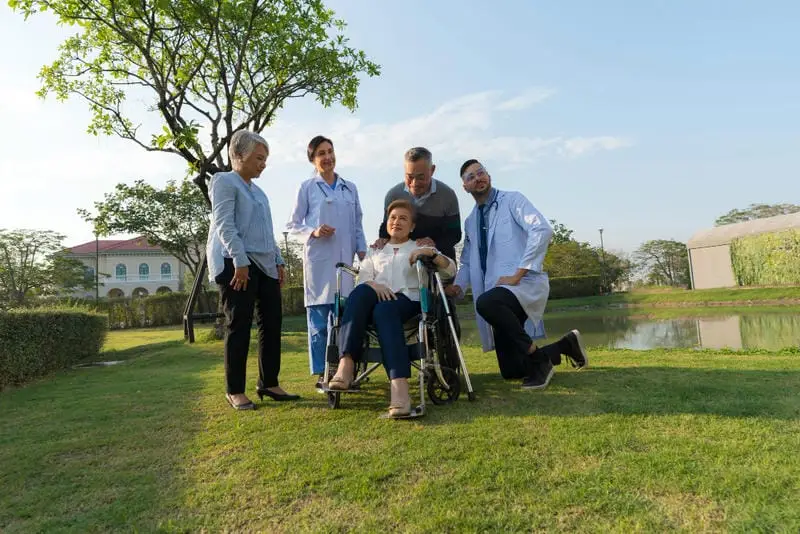- Published on: Oct 16, 2021
- 3 minute read
- By: Second Medic Expert
Urinary Tract Infection: Causes, Symptoms, And Prevention
Urinary tract infection: Causes, symptoms, and prevention
Some of the risk factors for developing UTI are obesity, diabetes, use of the intrauterine device (IUD), sexual intercourse, urinary tract abnormalities, or blockages. The symptoms include painful or frequent urination, increased frequency or urgency to urinate. Some other issues that may arise are lower back pain, abdominal pain, and smelly urine. Pineapple juice is often used for UTIs because it contains bromelain which has natural anti-inflammatory components which can help alleviate the discomfort associated with a urinary tract infection. Cranberry pills can also be taken to inhibit bacteria's ability to adhere to the bladder while uva ursi herb helps cleanse the bladder lining to prevent bacterial infections from occurring in the future.
Women should increase fluid intake and urinate frequently. After attempting to urinate, if it feels like there is still urine in the bladder, then another attempt should be made before going to bed. Pressure from the pelvic floor muscle will help empty your bladder and there's no need to put pressure on your lower abdomen. The best way for women with UTI to find relief is with medicine that clears up bacterial growth or infection of the urinary tract system including antibiotics. Elevate your legs when they are swollen- this helps dilute any toxins being pumped into them by your kidneys. Women can also try drinking cranberry juice which has natural antibiotic properties as well as uva ursi leaf tea which helps moderate renal function.
Causes of urinary tract infection can include vaginal sexual contact, poor hygiene, diabetes, UTI protection from bacteria that is found in the bowel and rectum. Symptoms of a urinary tract infection include burning during urination, the urgency to go frequently, and other pain outside the normal discomfort associated with bladder control. Prevention includes good hygiene practices such as wiping from front to back after toileting and avoiding sexual activity if at risk for UTI infections.
A urinary tract infection occurs when bacteria successfully enter the bladder and reproduce. Symptoms include frequent urination, pain with urination, blood in urine, or cloudy/pink/rice water-like discharge. Besides good hygiene practices (i.e., only using the bathroom during established bathroom breaks), prevention may also be aided by consuming cranberry juice. This is rooted in legends that poor Irish families would drink fresh cranberry juice to sweeten their urine so they wouldn't attract the unwanted attention of wealthy landlords looking for children to work long hours on poor wages in cotton mills or coal mines without pay; it also contains high levels of potassium).
Urinary tract infections are the second most common type of infection, with up to 5% of women getting at least one every year. These infections are caused by an overgrowth of bacteria that live within the urinary system. Amoxicillin is used to treat UTIs because it kills the bacteria being cultivated in the patient's bladder. It does not knock out all bacteria though, so if there are resistant strains present this will not have any effect on them. Symptoms include congested or painful urination or sensation of "needing to go" frequently but making little progress when trying to go anywhere besides your bladder which could be accompanied by fever, sexual arousal symptoms (vaginal secretion/orchitis), nausea.
A UTI is an infection in one of your urinary organs, not including the penis or vagina. Luckily, UTI infections are very easy to treat with antibiotics and simple self-care steps, so it's important to identify them right away and take care of the problem as soon as possible! The most common symptoms of a UTI include An intense need to urinate often with little or no warning; Pain or burning during urination; Difficulty starting or stopping urination; Passing small amounts of urine multiple times during the day; Back pain.
A urinary tract infection (UTI) is an infection that's present in the part of your body that makes and removes urine. Your urinary tract includes the bladder, urethra, ureters, kidneys, and all of the structures involved in rinsing out your bladder.
Urinary tract infections can cause mucus or pus to be present in your pee. They may also give you other symptoms like burning during urination or needing to pee with urgency frequently-these are common signs of a UTI. Antibiotics will work for most patients with uncomplicated UTIs but if no change has happened within 3 days then call your doctor or go to Urgent Care so they can double-check on you!
Urinary tract infections are defined by the presence of bacteria in the bladder. The causes are mostly unknown, but risk factors include sexual intercourse, frequent trips to public restrooms, pregnancy, diabetes, and others. Menopause by itself isn't considered a risk factor for UTIs because women who have already gone through menopause do not have increased rates of UTIs when compared with post-menopausal women without UTIs. Symptoms can vary depending on many factors including how much time has elapsed since the bacterial infection began. If you experience any or all of these symptoms - frequency plus dribbling plus burning during urination - it is best to make an appointment with your doctor promptly because this could be evidence that there is an infection
The most common symptom for a urinary tract infection is abnormal urination, which you may notice as more frequent or burning sensations. You also may see blood in your urine or an increased need to use the bathroom. Some people experience stomach cramps and fever with UTIs.









